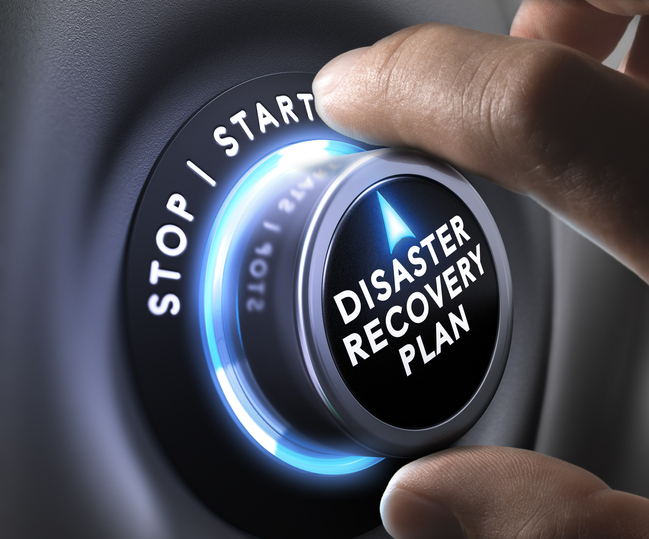
30 Oct The Importance of Having An IT Disaster Recovery Plan
IT systems and data are now integral to all businesses, no matter their size. In recent years, many companies have moved away from the office-based model with local data and application servers to hybrid working, utilising additional data and application services within the cloud.
Combine this with ever-increasing cyber security threats, and it’s easy to see why it’s vital to have and regularly review your IT Disaster Recovery Plan.
This post gives an overview of why it’s crucial to have an IT disaster recovery plan to return your business to normal operations following unforeseen events as swiftly and smoothly as possible.
What is a Disaster Recovery Plan for Business Continuity?
A Disaster Recovery Plan encompasses all the procedures, technologies and objectives to facilitate rapid recovery after a disaster.
A disaster could take several forms, incorporating major physical, environmental or virtual disasters such as:
- terrorist or cyber security attacks,
- severe weather (e.g., flooding) or other natural disasters,
- fire damage or other significant physical or technological outages.
Generally speaking, Disaster Recovery Plans are formulated to preserve data and provide a framework for recovering it quickly within a timeframe and an acceptable level of potential data loss to get a business back up and running ASAP.
The Importance of Disaster Recovery Planning
Could your business continue to run if your premises were lost to a disaster like those mentioned above?
What would be the economic impact of losing your IT system connectivity or business data?
How would it impact your reputation and ability to do business if you don’t have a detailed plan in place should something happen?
The time and revenue lost due to data and connectivity loss could kill a business. In addition, many companies are required to maintain records for several years for regulatory purposes, with the threat of significant fines or penalties if this isn’t fulfilled.
Not having a Disaster Recovery and Business Continuity Plan is a substantial financial and reputational risk not worth taking for the majority of businesses.
What to Consider in Your IT Disaster Recovery Plan?
As a minimum, your IT Disaster Recovery Plan should include the following:
Stakeholders and Responsibilities – who is the main point of contact to oversee the plan and ensure it remains up to date, and who are additional points of contact with responsibility?
Recovery Time Objective – the desired timeframe to recover essential data and connectivity before becoming business critical.
Recover Point Objective – the age of data to be recovered from backups. This differs for each business and will determine the frequency and amount of data to back up.
Vendors and other third-party suppliers – who may need to be contacted, including their details to support your business recovery.
Recovery Testing – regular or periodic testing of systems and procedures
With a suitable disaster recovery plan in place, it may also be possible to reduce the chances of a costly outage. For example, through pre-emptive infrastructure considerations, it’s possible to minimise the chances of all except the most extreme scenarios above (e.g. UPS units to cutover during power outages, using cloud data and systems to reduce reliance on a single physical building infrastructure).
It is commonly accepted that working closely with experts, including a Managed Service Provider such as Transpeed, is vital for a successful disaster recovery plan.
Utilising our expertise in IT technologies ensures you are getting up-to-date specialist knowledge to keep your business running smoothly should the unimaginable happen. Contact us for a chat about how we can help you protect your business and keep it running smoothly should disaster strike.


Sorry, the comment form is closed at this time.